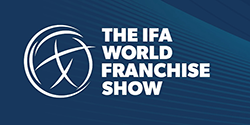Tracking unit economic performance effectively can take some doing. Generally, it involves 1) defining what constitutes comparable data across individual units, and 2) finding the right technology for recording and reporting it. Making it work requires not only strategizing and goal-setting at corporate, but also involvement and buy-in from franchisees - all in the name of improving system-wide profitability, one unit at a time.
"At the end of the day what we believe at Roark and Focus Brands is that - franchised or company-owned - a franchise is only as good as its unit-level economics," says Geoff Hill, who on January 1st completed his transition from president of Cinnabon (a Focus brand) to vice president at Roark Capital Group (which owns Focus Brands). "The more we can do to increase our unit-level economics, the more we'll get the growth we want," he says.
To date, Roark has invested in 15 franchise brands with a total of more than $3.7 billion in sales and 14,000 points of distribution in all 50 U.S. states and 33 countries. Hill says his new role at Roark is to identify new brand opportunities to purchase "in franchising primarily," and to use his operations background "to help existing or new companies we buy to maximize value." One of the ways to maximize value is by focusing on individual unit performance at all 14,000 locations.
At Cinnabon, a key brand goal for this year is to improve unit-level EBIDTA by 1 percentage point, says Hill. He was involved during the past year in setting up a system for measuring unit economics at the brand. "We did it with the franchise advisory council, and it took us a year," he says.
The problem Hill was trying to solve was how to measure unit profitability on a comparable basis for the 350-plus Cinnabon stores. Without reliable, comparable data across its units, how can a franchisor accurately determine the effect on ROI of a new initiative introduced across the system?
Any conflict and difficult discussions begin when you start to move in the process, says Hill. That's when franchisees see that this great new idea means change (e.g., they may have to retag their data) and will cost them some time and money. That's when it's time to sell the benefits. So before moving, Cinnabon contacted the franchisee advisory council to hammer out a solution that focused on benefits for both parties.
"We said, 'Let's work with our franchise partners to create the format,'" says Hill. "We did that first. It allowed us to get a P&L from 20 Cinnabons and really compare them; compare the cost of labor from one to another."
Step one in working with the FAC, he says, was agreeing on the format for reporting data that was accurate, uniform, and that met their reporting needs. Step two was identifying a point-of-sale system to be standard across the brand--and have the franchisees be willing to pay for it. "We can't send out 350 new POS units," says Hill.
With that in place, and no company-owned units, it was time to invest in some corporate locations, and Cinnabon bought four. "We believe that's an important piece of unit economics," he says.
"A lot of franchisors don't have that look inside the unit economics of their franchised units, making them 100 percent reliant upon their franchisees to provide that information." Hill calls this a "frustrating situation" for franchisors, rendering them unable to track how initiatives are affecting unit profitability. "Every franchisee has a different opinion of what a cost is. If the expenses are not equal, it's apples to oranges."
With the format, system, buy-in, and corporate stores in place, the data began to roll in. "We saw we could trust it and were able to measure it against our initiatives," says Hill. Sixty of the 350 Cinnabon bakeries are enrolled in the program. "We use them to see what happens to the P&L after an initiative," Hill says.
Example: The 60 Cinnabons in the program were divided into 3 groups of 20, with each group given a different way to prepare the rolls. Labor costs - and their relationship to unit profitability - could then be compared and evaluated. This method can be applied to any new initiative, says Hill. "Now, with a new product launch across the entire system, the view will come from the 60 - and we can compare how we do with our four, which are within the 60."
The new system kicked in as of January 1st, so franchisees haven't seen the numbers so far. Yet with input from the 60 units now available, any new product launch can be evaluated in terms of its effect on the top and bottom lines. Best practices can be determined empirically, and then tweaked based on results.
"We're continuing to stress why we're doing this, and they get it," says Hill. Successful multi-unit operators (some own 25 to 80 units, he says) think about unit profitability all the time. "Most have figured it out. Those that don't - and 3 to 6 is where the choking point starts - that's the group that really needs to understand this." Those with 3 or 4 units, who cannot be in each store all the time and find things slipping, he says, haven't figured out unit-level economics and start thinking about selling.
The successful multi-unit operators get it, he says. "They're very interested in how they're doing in the system, but most interested in how they're doing against other multi-unit operators. If I own 19, I can't really compare with a single-unit owner, so we try to get the multi-unit operators to work together, let them talk amongst themselves about how they're spending in regional costs and overhead," says Hill.
"What's most important for us - for anybody in the system - is that you can compare your numbers against the aggregate set. We have high, low, and average. That's the power of being in a franchise: you can compare numbers."








 The franchise listed above are not related to or endorsed by Franchise Update or Franchise Update Media Group. We are not engaged in, supporting, or endorsing any specific franchise, business opportunity, company or individual. No statement in this site is to be construed as a recommendation. We encourage prospective franchise buyers to perform extensive due diligence when considering a franchise opportunity.
The franchise listed above are not related to or endorsed by Franchise Update or Franchise Update Media Group. We are not engaged in, supporting, or endorsing any specific franchise, business opportunity, company or individual. No statement in this site is to be construed as a recommendation. We encourage prospective franchise buyers to perform extensive due diligence when considering a franchise opportunity.